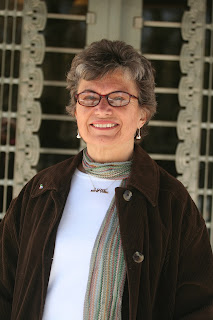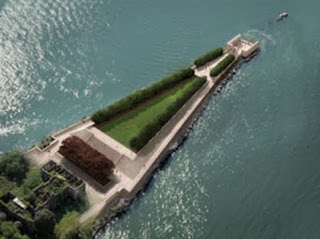 The Cultural Landscape Foundation (TCLF) and the Central Park Conservancy (CPC) will host Bridging the Nature?Culture Divide II: Stewardship of Central Park’s Woodlands conference tomorrow, Friday, October 5, 2012, at the Museum of the City of New York (registration now open).
The Cultural Landscape Foundation (TCLF) and the Central Park Conservancy (CPC) will host Bridging the Nature?Culture Divide II: Stewardship of Central Park’s Woodlands conference tomorrow, Friday, October 5, 2012, at the Museum of the City of New York (registration now open).
The one-day conference, co-curated by TCLF Founder and President Charles A. Birnbaum and CPC Associate Vice President for Planning Lane Addonizio examines the management of nature and culture in the stewardship of Central Park. The conference will feature speakers from public institutions and landscape architecture firms across the country, and follows up on the sold out, similarly themed conference held last year at the Jay Heritage Center in Rye, New York.
The conference will be followed on October 6-7 by What’s Out There Weekend New York City, featuring free expert led tours of parks and opens spaces in the city’s five boroughs (tours are free, registration is required).American Society of Landscape Architects (ASLA) CEUs will be available for the conference. The 843-acre Central Park, originally designed by Frederick Law Olmsted, Sr., and
Calvert Vaux, with a succession of additions and refinements by Samuel Parsons, Jr.,Michael Rapuano, Gilmore Clarke and others, is also host to 230 bird species, along with turtles, fish, and countless species of butterflies, dragonflies, and other insects. The Central Park woodlands are among the most historically significant designed landscapes in the country, providing valuable refuge for wildlife and New Yorkers alike. In the 1960s and 1970s, Central Park experienced an unprecedented decline, suffering from neglect and a lack of management. Litter filled its waterbodies- its Great Lawn was a great dust bowl- its woodlands were avoided, not celebrated. The Central Park Conservancy, a private, not-for-profit organization created in 1980, has skillfully and successfully reawakened, restored and maintained a world-class icon.
Nevertheless, managing a park that is both a culturally significant landscape and natural habitat is delicate- this conference specifically examines sustainability, the agendas of different constituencies, diversity, the role of people, and public education.
Creating a progression of varied landscape experiences was a primary goal of Central Park’s designers. Within the landscapes themselves, horticultural diversity was also a goal. In the Ramble, both exotic and native plants were to provide a sense of lushness and intricacy, realizing Olmsted’s intended “wild garden”effect. Neglect of the Park’s woodlands over a prolonged period resulted in a lack of horticultural and social (as well as scenic) diversity. What park stewards know is “letting nature take
its course” is not sustainable. While the woodlands serve to provide the experience of escape from urban life, they are in fact designed urban landscapes that require consistent management.
The conference features two panels addressing this stewardship dilemma- the first (the morning session) focuses on “lessons learned” by public sector stewards at Prospect Park (Brooklyn), New York Botanical Garden, and The Presidio (San Francisco)- the second (afternoon session) will be comprised of landscape architects in private practice with experience in urban parks (complete list below).
Speakers and Moderators:
• Eric W. Sanderson, Senior Conservation Ecologist, Wildlife Conservation
Society (moderator)
• Christian Zimmerman, Vice President for Design & Construction, The Prospect
Park Alliance, Brooklyn, NY
• Michael Boland, Chief Planning, Projects & Programs Officer, The Presidio
Trust, San Francisco, CA
• Todd Forrest, Arthur Ross Vice President for Horticulture and Living
Collections, The New York Botanical Garden
• Elizabeth K. Meyer, Associate Professor, University of Virginia, School of
Architecture, Landscape Architecture (moderator)
• Dennis McGlade, President/Partner, OLIN, Philadelphia, PA and Los Angeles,
CA
• Margie Ruddick, Margie Ruddick Landscape, Philadelphia, PA
• Keith Bowers, Biohabitats, Baltimore, MD
Registration is $150 and is available at the conference Web site. The Central Park Conservancy is the presenting sponsor, with additional support provided by Landscape Forms and the Museum of the City of New York.
About the Central Park Conservancy
The mission of the Central Park Conservancy is to restore, manage and enhance
Central Park in partnership with the public, for the enjoyment of present and future
generations. A private, not-for-profit organization founded in 1980, the Conservancy
provides 85 percent of Central Park’s $46million park-wide expense budget and is
responsible for all basic care of the Park. Since 1980, the Conservancy has overseen
the investment of more than $650 million into Central Park. For more information on
the Conservancy, please visit centralparknyc.org.
About The Cultural Landscape Foundation
The Cultural Landscape Foundation provides people with the ability to see, understand and value landscape architecture and its practitioners, in the way many people have learned to do with buildings and their designers. Through its Web site, lectures, outreach and publishing, TCLF broadens the support and understanding for cultural landscapes nationwide to help safeguard our priceless heritage for future
generations.









